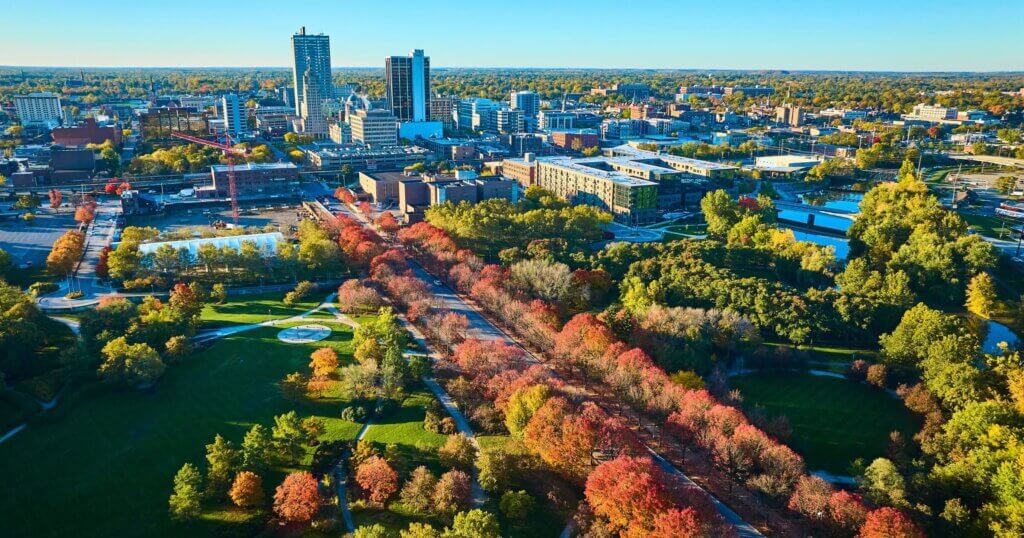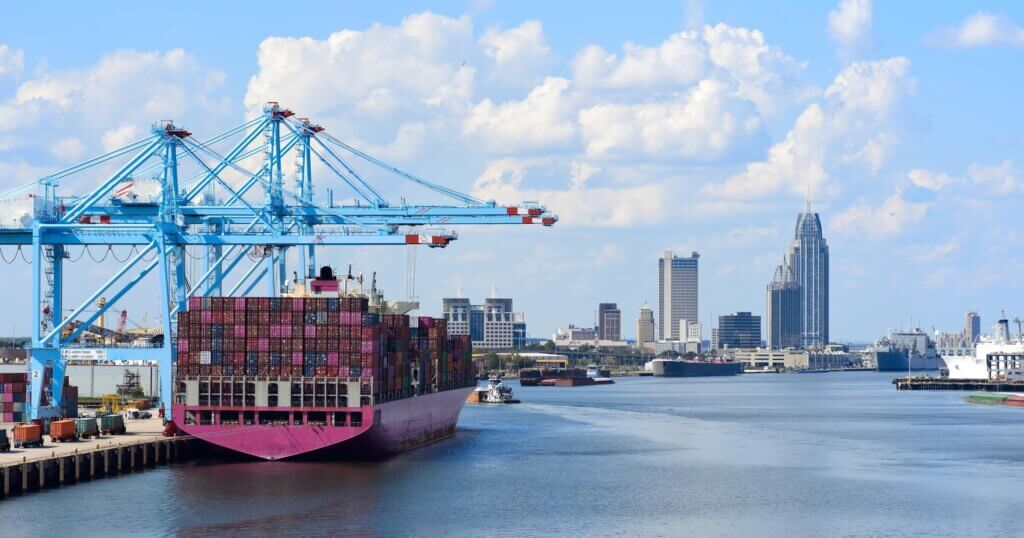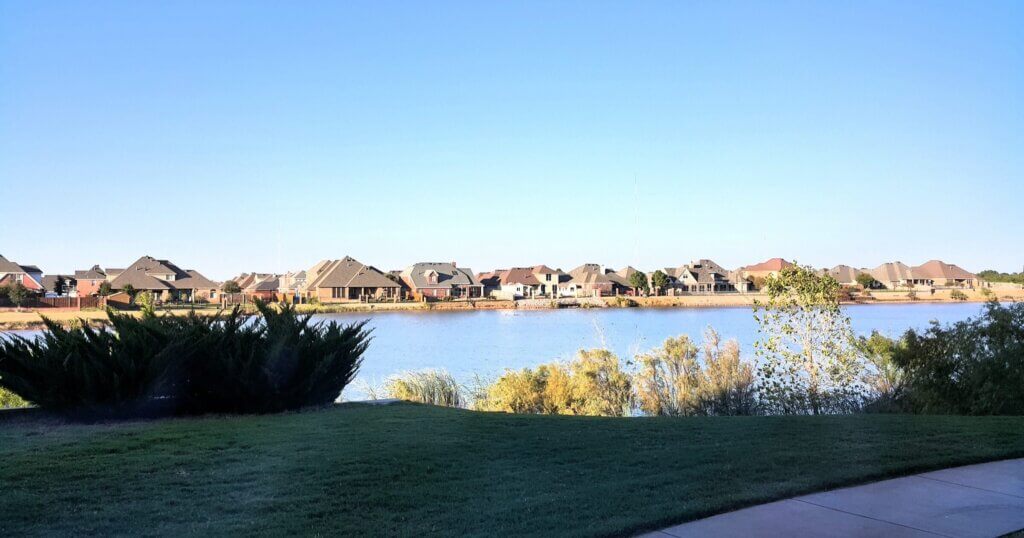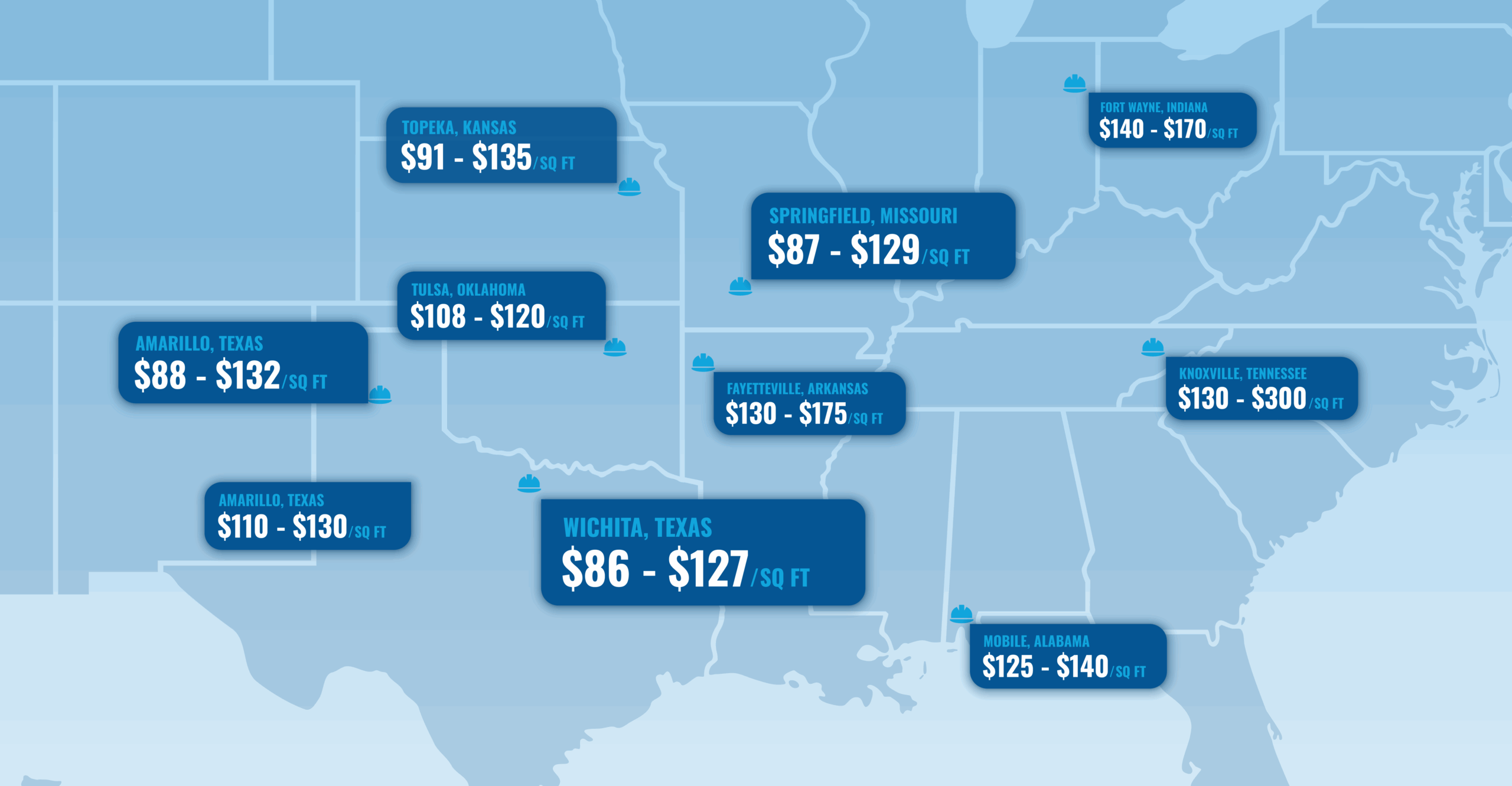Building a home in 2025 doesn’t have to break the bank, but where you choose to build can make a big difference. Construction costs are shaped by everything from land prices and labor availability to permitting fees and local regulations. This list takes a closer look at 10 cheap American cities to build in, helping you narrow down your options before breaking ground.
Quick look
- Building in the right city can save thousands. These 10 U.S. cities offer some of the lowest average construction costs in 2025, ideal for first-time builders and developers.
- Knoxville, Lubbock, and Fort Wayne lead the list, thanks to low land prices, streamlined permitting, and tax advantages. These cities offer budget-friendly options for building.
- Mid-sized cities like Tulsa, Mobile, and Springfield balance low construction costs with access to services, jobs, and infrastructure.
- From fees to finish level, every detail matters. Local policies, labor markets, and design choices can dramatically influence final building costs, even in cheap cities.
Knoxville, Tennessee
Knoxville is nestled in eastern Tennessee along the Tennessee River, with a 2020 population of approximately 190,740 within a roughly 104-square-mile area, part of a metro area with nearly a million residents.
One main reason Knoxville is affordable to build in is its low property tax, currently set at just $2.1556 per $100 of assessed value, the lowest rate since 1974. The city’s relaxed permitting process and streamlined regulations also help keep expenses down.
In 2025, the average cost to build a standard or mid-range custom home ranges from about $130 to $300 per square foot, with builder-grade homes at the lower end (around $130–$135), and premium custom homes reaching up to $300+ per square foot. That affordability compares favorably to Tennessee’s broad range of $130–$524 per square foot, depending on design and finish level.
Overall, Knoxville offers an appealing mix of location, construction cost savings, and supportive local policy, making it a standout among cheap American cities.
Lubbock, Texas
Lubbock sits in the northwest part of Texas, home to about 260,000 residents and a thriving metro region. The city is known for its strong agricultural ties and growing higher‑education presence through Texas Tech University.
Building in Lubbock remains budget‑friendly thanks to some of the region’s lowest land prices in the state and an ample supply of skilled labor, especially in framing and foundation trades, which go a long way in cutting overall costs.
In 2025, basic home construction runs $110 to $130 per square foot, with premium builds reaching $130 to $170. According to ProMatcher, even basic custom homes can be built for just $109.61 per square foot.
The local government actively supports development, offering streamlined permitting, relatively low fees, and a business climate favorable to builders. These factors help keep costs stable and somewhat predictable in the current housing market.
Fort Wayne, Indiana

Aerial photo of Fort Wayne courtesy of https://www.shutterstock.com/
Fort Wayne is located in northeastern Indiana, about 18 miles west of the Ohio border. With approximately 264,000 residents in the city proper and over 420,000 in the metro area, it is the state’s second-largest city.
One of the reasons Fort Wayne ranks among cheap American cities to build in is its low land and construction costs. Inexpensive plots in suburban and exurban areas, paired with stable local labor rates, help keep overall project budgets in check.
As of 2025, estimates show basic home construction costs between $140 and $170 per square foot, with mid-range builds often landing near $170 per square foot, and premium options rising higher. Other sources suggest a similar range of $150 to $225 per square foot, depending on finish level and lot conditions.
For many first-time builders, Fort Wayne’s cost predictability and affordable entry point make it a great choice. It offers the benefits of a sizeable city, good services, job options, and community amenities, while keeping the price per square foot lower than the national average of about $207.
Fayetteville, Arkansas
Fayetteville, nestled in the Ozarks, is the second-largest city in Arkansas with just over 101,000 residents as of 2023. Home to the University of Arkansas, it combines vibrant college-town energy with steady population and economic growth.
The city benefits from a strong construction sector and affordable regional conditions. Access to reasonably priced land in suburban areas, lower utility and development fees, and a steady supply of local tradespeople help keep prices manageable. Statewide, building a mid-range home costs between $157 and $346 per square foot, but Fayetteville often lands in the lower end of this range.
In 2025, typical costs in Fayetteville are approximately $130–$175 per square foot for custom homes, while basic builds can range from $91 to $135 per square foot. Mid-range homes typically fall within the $150–$200 bracket, with high-end or luxury builds exceeding $200 per square foot.
Local tax incentives and labor-market advantages add to Fayetteville’s appeal. Arkansas’s generally low tax burden, combined with comparatively modest construction wages, makes the city especially attractive for first-time and budget-focused builders.
Topeka, Kansas
Located along the Kansas River in northeast Kansas, Topeka is the state capital and home to around 126,600 residents according to the 2020 census. It offers a balanced mix of urban access and small-city affordability.
Topeka remains one of the most affordable places to build, thanks to low utility rates, straightforward zoning laws, and a lower cost of living compared to national averages. Builders benefit from fewer regulatory hurdles and a steady supply of local tradespeople.
As of 2025, construction costs for standard homes range from $91 to $135 per square foot, with the average sitting around $113 per square foot. More customized or high-end builds can cost between $130 and $190 per square foot, depending on design and finish level.
For anyone looking to build on a budget, Topeka delivers substantial value and fewer headaches during the construction process.
Mobile, Alabama

Downtown of Mobile, Alabama. Photo of courtesy of https://www.shutterstock.com/
Mobile is a historic coastal city located along the Gulf of Mexico, with nearly 187,000 residents within the city and a metropolitan area of more than 430,000. It offers the charm of waterfront living without coastal premium prices.
Building in Mobile remains cost-effective due to easy access to labor and local materials, such as wood, concrete, and steel, supported by regional supply chains. This helps reduce transportation costs and keeps bids competitive.
In 2025, most new homes in the Mobile metro area are built for $125 to $140 per square foot, with basic custom homes leaning toward the lower end and higher-end homes reaching the upper limit.
Local building departments encourage residential development with flexible codes and supportive policies. Builders often experience fewer delays in permitting and inspections, which also helps keep projects within budget.
Springfield, Missouri
Springfield is nestled in the southwest corner of Missouri, serving as a regional hub with approximately 170,000 residents and a significantly larger metropolitan community. The city combines the amenities of a mid-sized urban center with affordability that appeals to newcomers and families alike.
Building in Springfield benefits from a low cost of living, modest land prices, and regional labor markets that help lower construction budgets. For many first-time builders, the appeal is clear: access to good schools, healthcare, and outdoor recreation without high build expenses.
As of 2025, basic custom homes cost about $108 per square foot, with a range of around $87 to $129 per square foot on standard builds. Local reports suggest that building prices here run from $130 to $200 per square foot, depending on finishes and complexity. Still, these prices are well below the national average helping it make this list of cheap American cities to build a house in.
Amarillo, Texas
Amarillo is situated in the Texas Panhandle, covering approximately 103 square miles with a population of roughly 200,000 as of 2020. Its flat terrain and wide-open spaces make it ideal for budget-friendly land acquisition and development.
Builders can benefit from easy permitting through the city’s Building Safety Department, which offers clear fee schedules and streamlined code guidance for new homes. With no state income tax and moderate property taxes, the Texas tax environment also reduces long-term costs for homeowners.
In 2025, basic custom home construction runs around $110 per square foot, typically ranging from $88 to $132, according to ProMatcher. Statewide data confirms Texas build costs extend from $120 to $250 per square foot, depending on finishes and design complexity.
Amarillo supports infrastructure and development through regional transportation access, utilities, and active economic incentives. Combined with budget-friendly land and expedient municipal processes, the city offers strong value for both first-time and experienced builders.
Tulsa, Oklahoma
Tulsa is located in northeastern Oklahoma in a region known as Green Country. With roughly 415,000 residents in the metro area, it has a solid mix of urban amenities and natural surroundings, including parks, museums, and a lively arts scene in neighborhoods like Midtown and Brookside.
Builders in Tulsa enjoy access to a strong pool of local contractors, competitive pricing on materials and labor, and economic incentives such as the city’s Vision 2025 initiatives that support residential development.
As of 2025, basic construction costs run around $108-$120 per square foot, with mid-range homes estimated at $120–$140 per square foot, and premium or luxury homes climbing to $160-$190, depending on finishes.
Several Tulsa neighborhoods, including East Village and the Pearl District, are being revitalized, attracting new homebuilding activity. Suburbs like Broken Arrow and South Tulsa have seen steady growth, helping stabilize costs and supporting long-term market demand.
Wichita Falls, Texas

Wichita Falls, Texas. Photo of courtesy of https://www.shutterstock.com/
Last on our list of cheap American cities to build a home in is Wichita Falls. Wichita Falls is a small Texas city of just over 102,300 residents, serving as the county seat and home to Midwestern State University within a metro area of around 151,300 people. Its compact size and Texas location contribute to its reputation as one of the most affordable places to build.
Local regulations support this reputation. Wichita Falls charges a permit fee of just $0.15 per square foot for new residential home plans, with predictable review rates and minimal bureaucracy. These consistent permit rates, combined with accessible labor and materials, make the construction process more favorable.
For 2025 projects, standard home construction costs about $106 per square foot, within a range of $86 to $127 for basic builds. Other estimates suggest typical builds range from $120 to $140 per square foot, while premium homes can reach $180 to $210 per square foot.
Altogether, Wichita Falls offers substantial savings for budget-conscious developers. Its low fees, affordable labor, predictable costs, and simplified rules create an ideal environment to build without overshooting the budget.
Bottom line
Where you build plays a big role in how much you’ll spend. Local economics, tax rates, labor availability, and city policies all shape construction costs in ways that can save or stretch your budget.
Prices can also vary depending on the size of the lot, materials used, design complexity, and finish level. Even in affordable cities, these factors can significantly shift your costs.
Getting ahead of rising labor or material costs can make a noticeable difference in your budget. Consider exploring these cheap American cities early if you’re thinking about building in the next year or two. For a deeper dive into the building process, check out these helpful guides and resources:
- How Much Does It Cost to Build a House in the US?
- Builder’s License vs Contractor’s License
- How to Build Earthquake-Resistant Buildings
- Top 9 Must-Have Home Features to Consider When Buying a House
Want more tips and tools for smarter building? Subscribe to our newsletter to stay updated on trends, costs, and everything construction.


